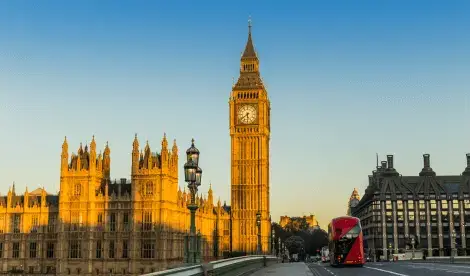Rachel Emmerson ACCA FCCA
- Partner in Accounts, Outsourcing and Business Services
- +44 (0)330 124 1399
- Email Rachel
Suggested:Result oneResult 2Result 3
Sorry, there are no results for this search.
Sorry, there are no results for this search.
View all peoplePublished by Rachel Emmerson on 18 November 2024
Share this article
In the latest in the series of articles, Phil Eckersley, the former Agent for the Bank of England, considers the latest economic news.
In the same way as suggesting the sun is kind of bright, the last few months have heralded some seismic events. These include, the Labour government’s first Budget, the US Presidential Election and a change in UK Monetary Policy. On top, the Mansion House speech by the Chancellor has provided some guidance for the likely direction of UK economic policy with an emphasis on our European trading partners, less regulation in financial services and a shake up of pension funds aimed at boosting GDP. All have significant implications for UK growth and medium term outlook for inflation. While the events are linked, it’s worth considering them in turn.
The UK Budget
While early days, the Labour government’s first budget for 14 years has received a mixed reaction from financial markets, but in the business sector the mood is decidedly more hostile, specifically from certain sectors. Economically, it has been described, on balance, as mildly expansionary, at least in the short run. However, this headline masks the details of what is a tax raising, high-spending, heavy borrowing Budget that has left limited headroom to meet the new borrowing targets. Market concerns about the lack of fiscal wiggle-room have already started to emerge as reflected in further rises in gilt yields. These have swallowed up some of the available slack. The financial implications of the various policies are serious as the rising cost of servicing the net borrowing requirement can only be met by: more debt (not advisable as markets will expect an ever-rising risk premia to finance it); less expenditure (not planned) or higher taxes – take your pick! And this set against a backdrop of debt servicing costs of around £100billion and rising per annum.
And for UK businesses…
The Budget was a hammer blow for labour intensive and/or sectors with a high ratio of part time workers. Changes to employer NI charges will inevitably lead to lower employment levels with only limited prospects that firms will be able to replace labour with capital. Nor are firms likely to claw back additional labour costs by reducing non-labour costs/ investment etc. Their only real recourse is to accept lower profits, raise prices and/or cut labour costs, in other words employment. As consumers we therefore face the prospect of deteriorating service levels as firms pare back staffing levels or higher prices eroding real spending capacity. Furthermore, the reduction in the lifetime limit for capital gains tax relief will remove what has been an important incentive for growth businesses.
The US Election
After months of media hype, last week saw the election of Donald Trump as new leader “of the free world”. While Trump clearly has a marmite effect on voter and commentator sentiment, it’s worth considering the potential impact of prospective changes to US economic policy in the context of global trade and on the UK.
Trade
The much-vaulted 60% tariff on Chinese goods and 10-20% on goods from other countries, if implemented, is likely to be extremely harmful to global trade and, in particular, for those countries that enjoy a trading surplus with the US. Unfortunately for the UK, the US is our largest single trading partner (excluding the Euro-Area as an entity). So, any tariff war is likely to be detrimental for UK exporters. More generally, economic historians will point to the 1930s where the imposition of tariffs (Smoot-Hawley Tariff Act of 1930) as the forerunner to the Great Depression. Research by Morgan Stanley suggests full implementation of the proposed tariffs could add 1% to domestic inflation (in the US) and wipe 1.5% of growth off (US) GDP.
Other potential US measure
Many countries have been engaged in a race to the bottom of the Corporation Tax (CT) levy as a competitive CT rate attracts high value-added enterprises looking to maximise profits. The Trump regime has promised to cut US CT to 15% for companies that make products within the US in a bold move designed to attract inward investment. Ironically at a time when the UK government is increasing the UK rate of CT. There is also plenty of speculation that tax cuts are on the way. These have been aimed at households. Such policies are likely to stoke-up inflation and raise the US government debt to record peacetime levels. These measures are on top of promises of de-regulation in financial services, a so-called bonfire of red tape.
Monetary Policy
The Bank of England’s MPC reduced the bank rate on November 7th in a widely anticipated move reflecting the need for some easing following the recent reads on CPI and growth. Financial markets are expecting further reductions over the next year although the rate of decline and its pass through into borrowing costs for firms and households will be tempered by a mildly more inflationary climate combined with the rising gilt yields required to service UK debt. The outlook appears a little more sombre than earlier in the year as forecasters revise down UK growth prospects in the near-term.
Share this article
This site is protected by reCAPTCHA and the Google Privacy Policy and Terms of Service apply.
Our complimentary newsletters and event invitations are designed to provide you with regular updates, insight and guidance.
You can unsubscribe from our email communications at any time by emailing [email protected] or by clicking the 'unsubscribe' link found on all our email newsletters and event invitations.
This site is protected by reCAPTCHA and the Google Privacy Policy and Terms of Service apply.





